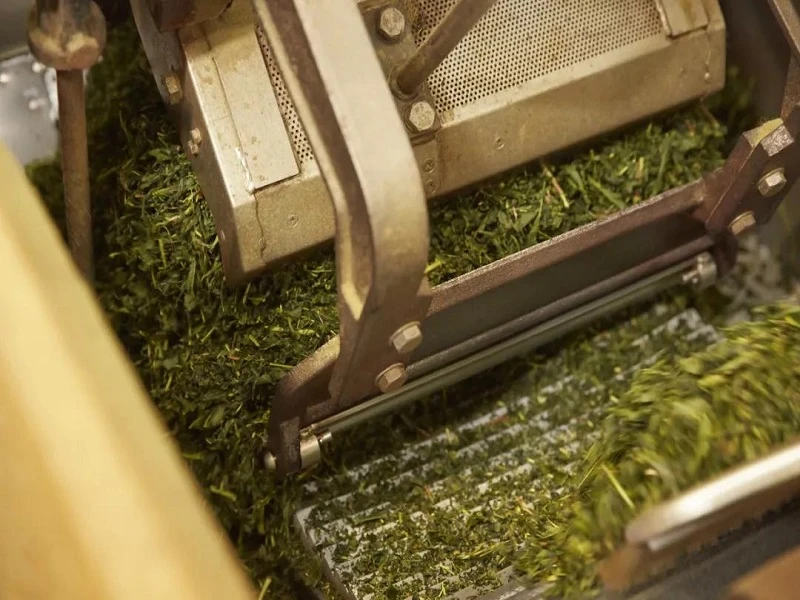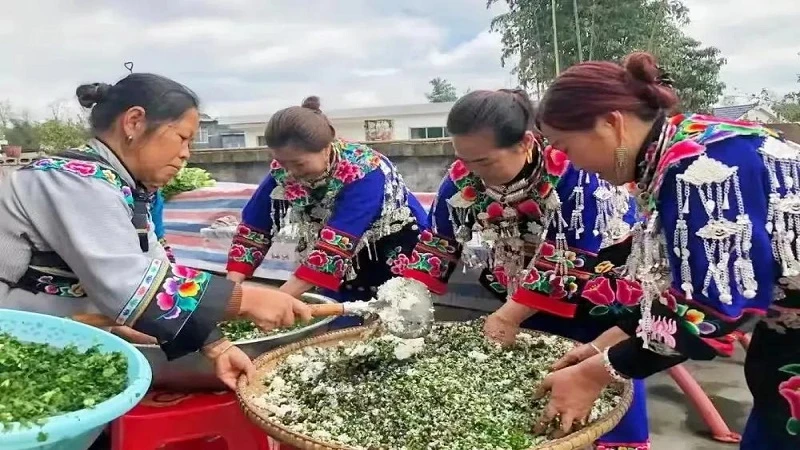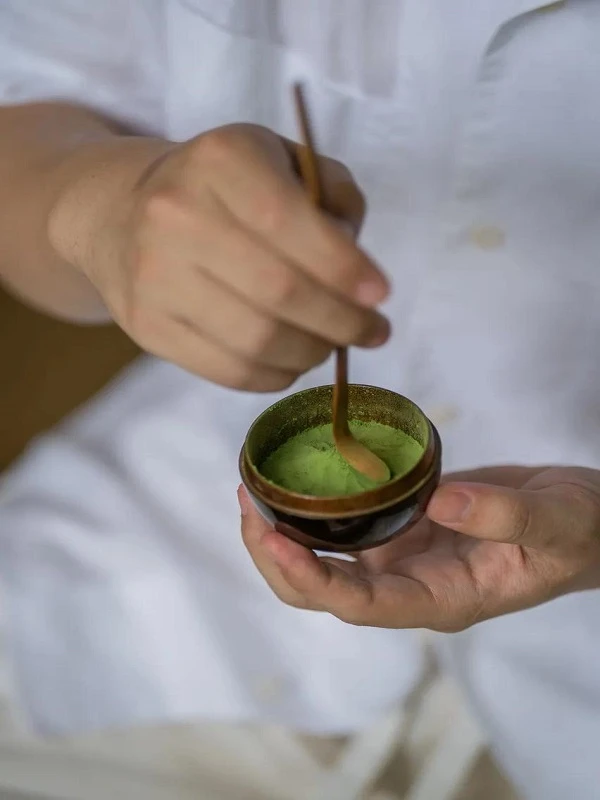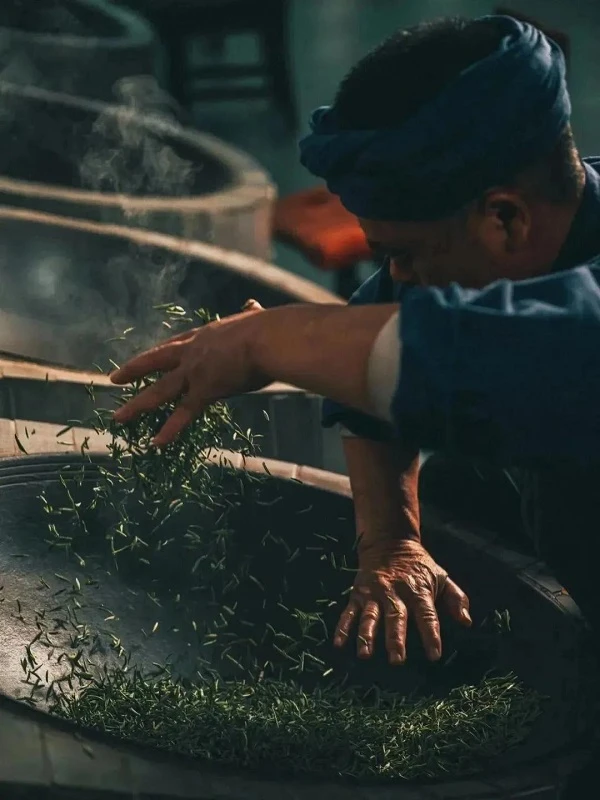Matcha, a vibrant green powder made from finely ground tea leaves, has long been a popular flavor in drinks and desserts around the world. Its history, however, is rooted in China, where tea has been a cornerstone of the culture for millennia. Surprisingly, modern-day matcha doesn't come from China's more famous tea regions like Fujian or Zhejiang, but from a small town nestled deep in the mountains of Guizhou Province—Tongren (铜仁).
Tea's journey in China began as far back as the mythological era of Shennong, when tea leaves were initially used as food or medicine. It wasn't until the Wei and Jin dynasties that the practice of grinding tea into powder began to take shape. Even then, tea was often brewed with various herbs and spices, and the tea powder itself was considered more of an additive than a central component of the drink.
The true turning point came during the Tang dynasty with the arrival of Lu Yu, known as the "Tea Sage." Lu Yu's disdain for the overly complicated tea brewing methods of his time led him to develop a more refined approach to tea preparation. He wrote the Classic of Tea, the first comprehensive book on tea culture, which established the foundation for modern tea drinking. It was during this period that the term "matcha" (then known as "mocha") was first recorded. By the Song dynasty, the tradition of finely grinding tea into powder had evolved further, with matcha becoming a popular drink among the aristocracy.

Guizhou's Unique Matcha Ecosystem
While matcha's historical roots may be found in China's central plains, the ideal environment for growing matcha lies in Guizhou's rugged mountains. Guizhou, situated in the southwest of China, boasts a unique climate and geographical advantages that make it a hidden gem for tea cultivation.
At an average altitude of 1,100 meters, Guizhou's mountains are often enveloped in mist, which creates the perfect conditions for growing tea. The province's location near the 26th parallel north—within what is considered the "golden tea zone"—provides ample sunlight without being overly harsh. The result is a slower photosynthesis process, which enhances the tea's flavor by increasing its amino acid content and reducing bitterness.
Tongren, in particular, benefits from the diverse microclimates of the Wuling Mountain Range. This region is known for its organic farming practices that avoid chemical fertilizers and pesticides, allowing for the production of pure, high-quality matcha. In fact, it was only a year after establishing a matcha production base in 2018 that Tongren earned the title of "China's Matcha Capital."
Today, Tongren produces an impressive 4,000 tons of matcha annually, accounting for one-quarter of China's total matcha output, with exports reaching more than 40 countries and regions worldwide.
A Modern Twist on Matcha Culture
What sets Guizhou's matcha apart is not just its history or geographical advantages, but the way it has integrated into the region's modern lifestyle. In Tongren, matcha is not just a beverage—it's a cultural experience that extends into various aspects of daily life.
Traditional matcha-based products like matcha noodles, matcha ice cream, and matcha snowflake crisp are staples in local shops. But Tongren's innovation doesn't stop there. Shops now offer an array of unique matcha-infused goods such as matcha face masks and matcha toothpaste. This creative expansion of matcha into everyday items demonstrates how deeply matcha culture has become woven into the fabric of life in Guizhou.
The influence of local cuisine can also be seen in the creative fusion of matcha with regional foods. Recent years have seen the rise of matcha sweet potato noodles, matcha rice tofu, and matcha glutinous rice buns—delicacies that are exclusive to Tongren and not available elsewhere.
For travelers, visiting Tongren offers more than just a taste of authentic matcha. Walking through the misty tea fields, breathing in the fresh mountain air, and learning about the ancient art of tea cultivation from local farmers provides a unique cultural experience.
Tongren's Matcha Revolution
Beyond its culinary creations, Tongren is also home to a thriving tea culture that dates back thousands of years. Historical records indicate that Guizhou has been growing tea for over 2,000 years, with some ancient tea plantations still in operation today. One remarkable discovery is the fossilized tea seed found in Guizhou, estimated to be over a million years old, the oldest such fossil ever found. This places Guizhou as a contender for being the "world's tea origin."
Given this rich history, it's no surprise that the town has embraced its role as a leader in modern matcha production. With its ancient tea-making traditions and Song dynasty techniques still in practice, Tongren has emerged as a "super factory" for matcha, seamlessly blending time-honored methods with cutting-edge technology to meet growing global demand.
Though Tongren has already established itself as a major player in the matcha industry, its rise to worldwide fame is only just beginning. As global awareness of Guizhou's matcha continues to grow, the small county is poised to become a must-visit destination for matcha enthusiasts.
While matcha may be the star of Tongren, the region's rich culinary heritage also deserves attention. Tongren's cuisine is a reflection of its mountainous landscape and the cultural diversity of its people, particularly the Dong ethnic group. One standout dish is *guangguan oil tea*, a savory concoction made from old tea leaves, glutinous rice flour, and local ingredients like pork bones and free-range chicken. The tea soup's blend of rich flavors—savory, spicy, and aromatic—creates a satisfying experience that's hard to forget.
For visitors seeking local street food, Tongren glutinous rice dumplings are a must-try. These dumplings, made from a mixture of glutinous rice and sticky rice, are stuffed with tofu and pork, creating a chewy yet flavorful bite.



